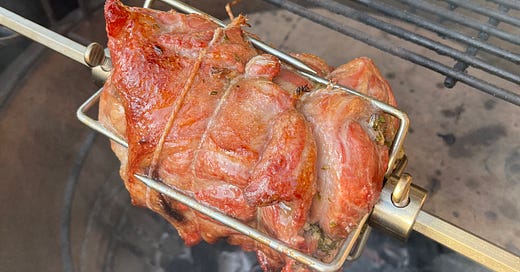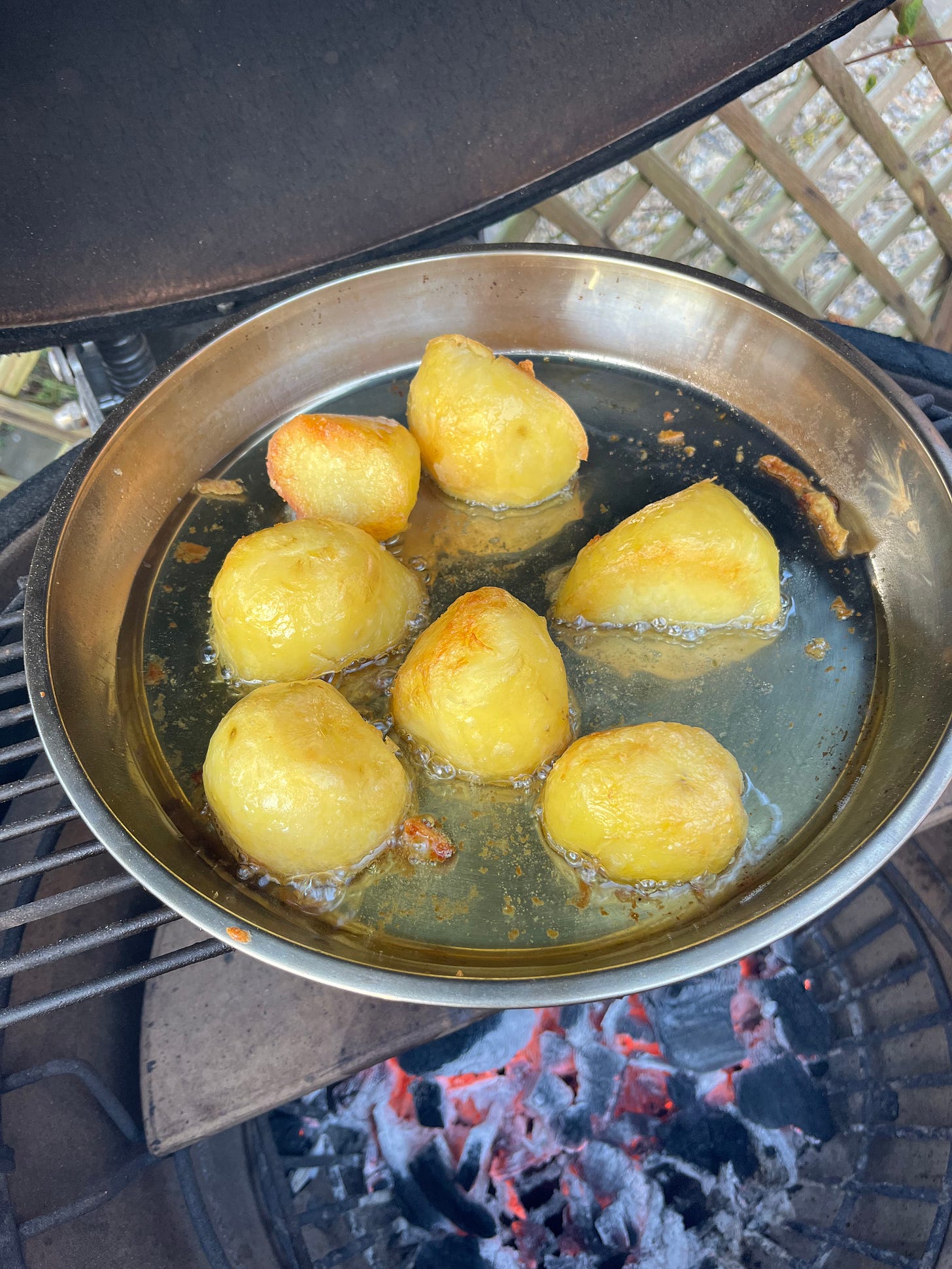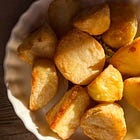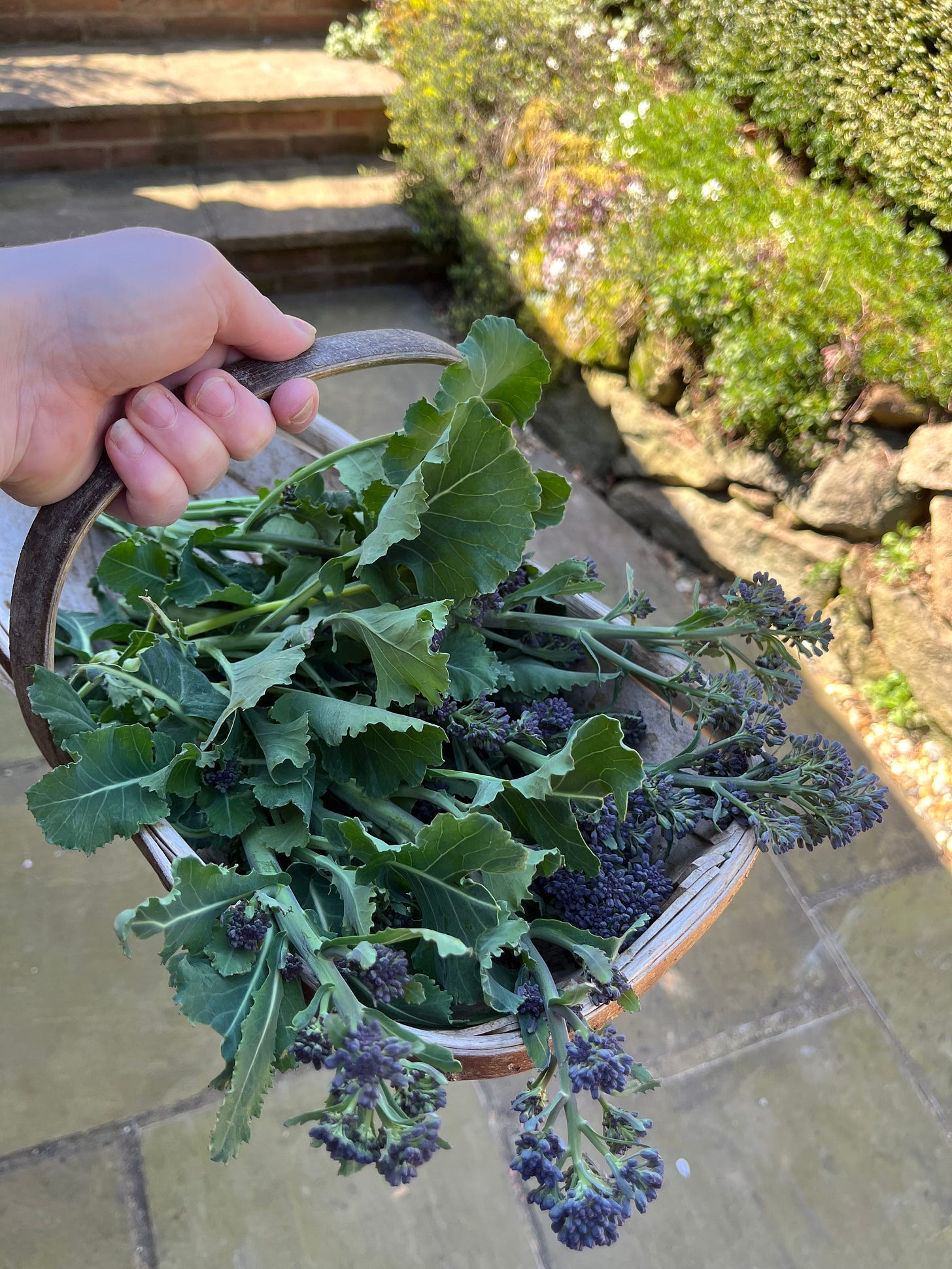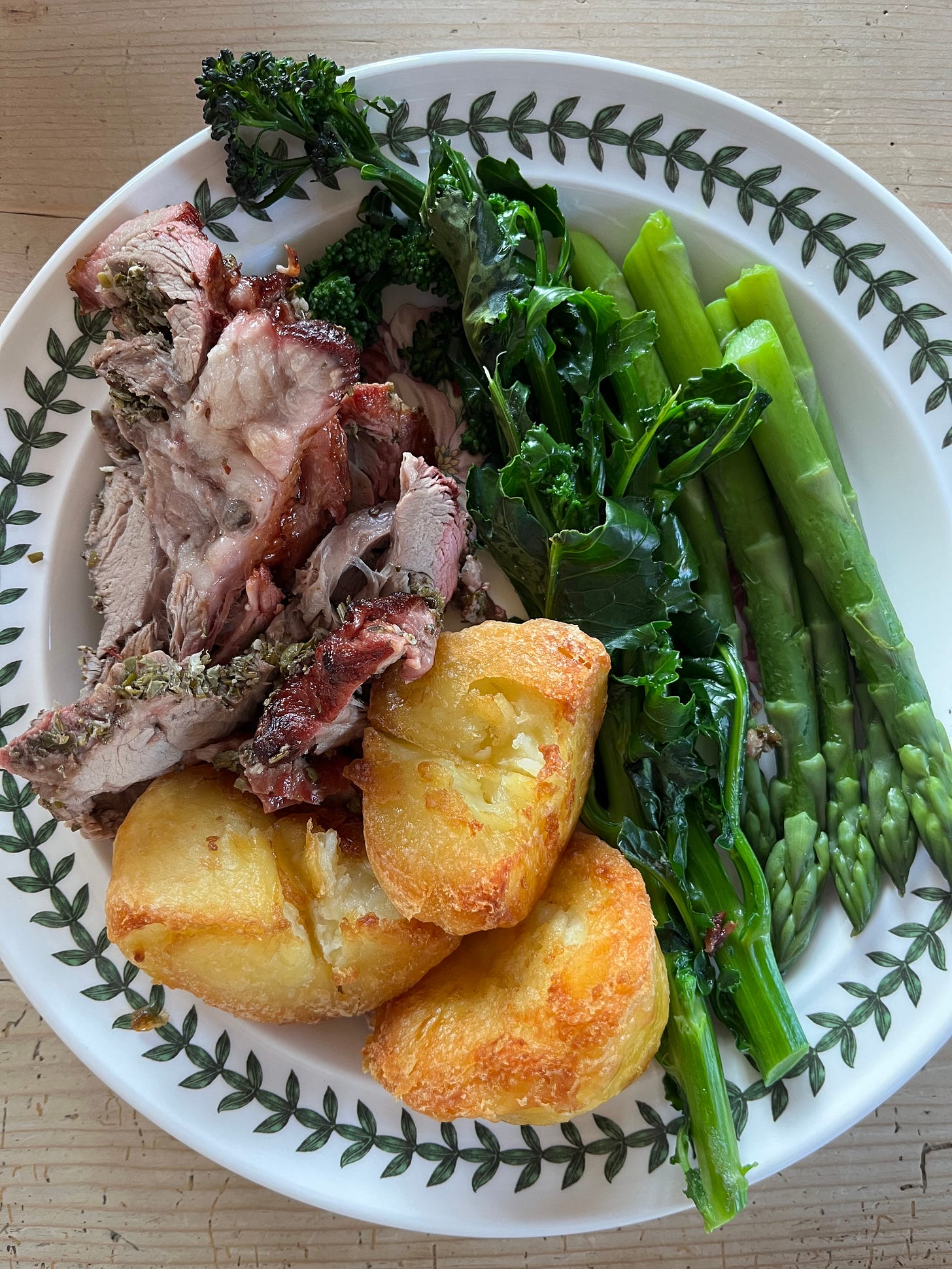On cooking a Sunday roast on the barbecue.
Discovering my Father's preferred Sunday evening activity.
It is an undisputed fact in our family whilst I’m the cook, and my mother is the baker, my father is the pit master. He’s always been a keen outdoor cook (as pictures on my blog of him manning the grill as far back as 2014 at my childhood home can attest), even building his own stone barbecue at our old French house, but it is since moving house for early retirement and the acquisition of another big ceramic number did his barbecue skills (and project scope) seriously move up a gear.
Speaking to my parents on the phone on a Sunday night as I oven roast joints of local pork, lamb and beef, or roasted the occasional chicken I was often told they were doing their lamb on the barbecue that night. Yes, the whole roast, potatoes and all. But it is only over the past few weeks I’ve seen my Dad’s cooking method in action. And, as is usually the case in modern food media after I posted some of the process to Instagram, I received quite a few messages asking for the ‘recipe’. Well, there is not a recipe as such, but this is how he does it.
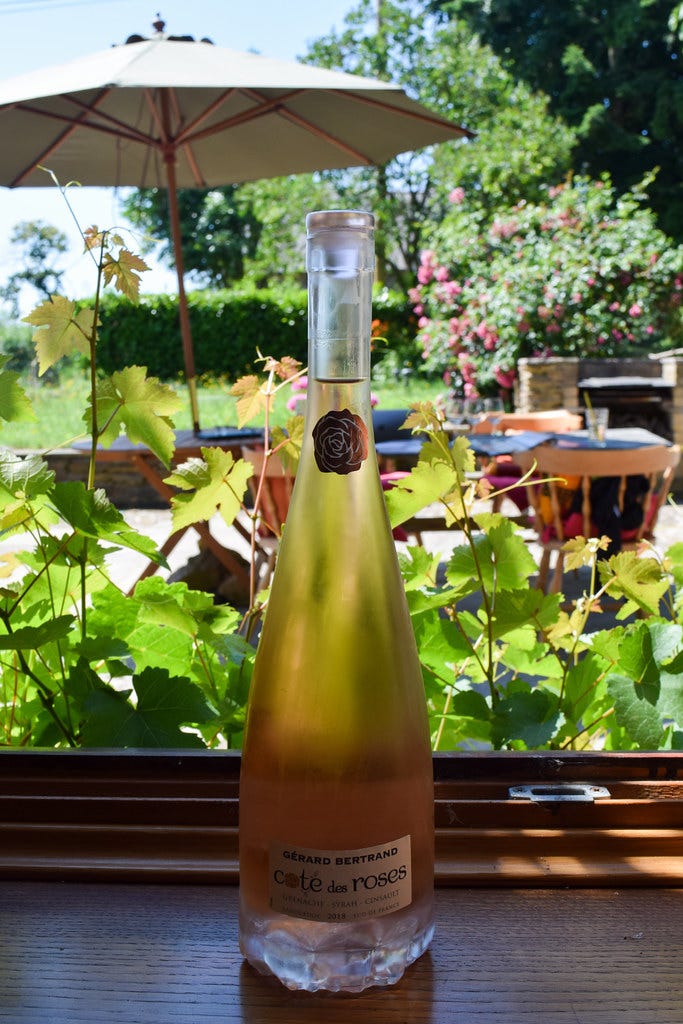
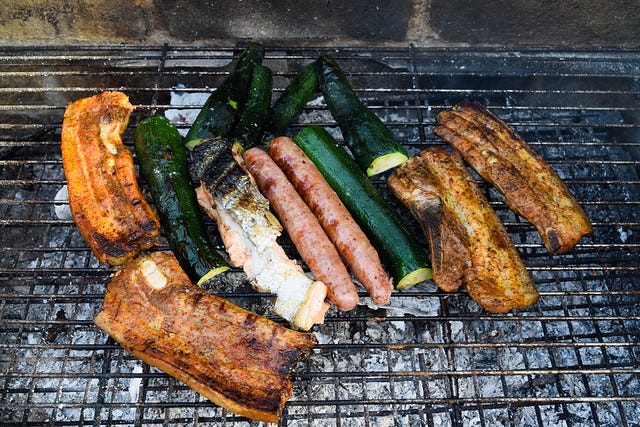
The Lamb
Shall we start with the lamb itself, because you can pre-marinate it if you want to? For a bit of ‘compare and contrast’ we did a piece of half lamb shoulder and half lamb leg on back-to-back weekends and we felt that the lamb shoulder had superior texture and flavour, but the leg was still delicious, so don’t put only having lamb leg put you off. Obviously you need to de-bone it, and before rolling the piece and securing it with kitchen string you need to smother what will become the inside of it with a mixture of (a lot of) roughly chopped garlic, finely chopped rosemary, salt, pepper, and enough olive oil to make a paste, so that once it is rolled it makes a filling. Anchovies can be used in place of the salt, and no, I don’t have an exact recipe as my father just grabs handfuls each time he does this. I think fresh thyme would also be a good add-in.

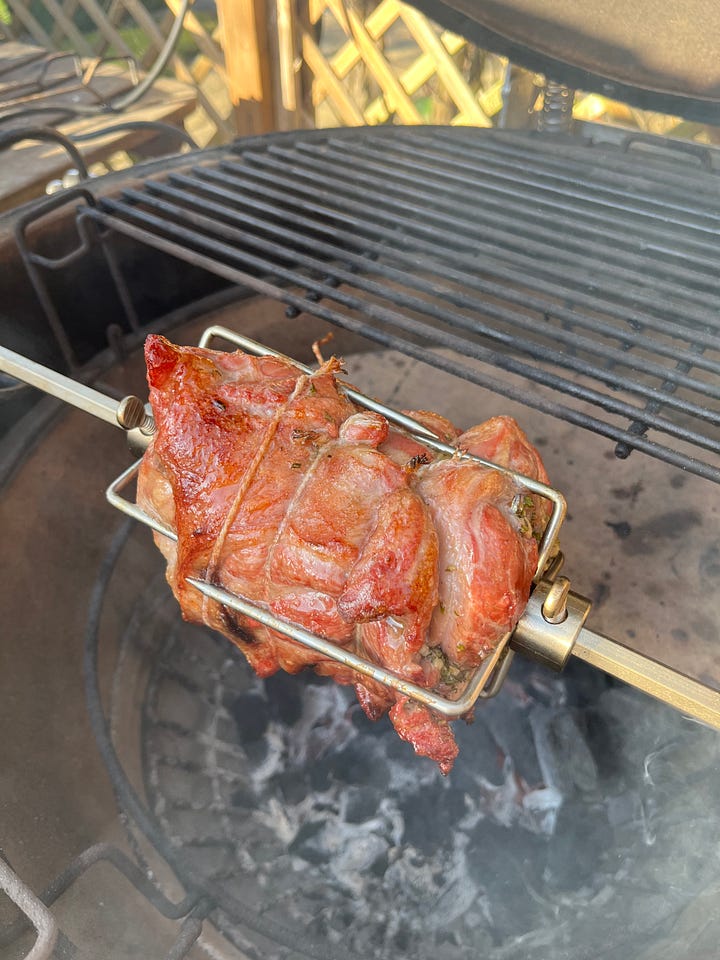
As for the cooking of it, we fitted it to the rotisserie inside the Kamado egg barbecue (you need one with a closable lid where you can maintain the cooking temperature, as well as one that obviously accommodates a rotisserie attachment) and cooked it until his Meater probe thermometer said it was done. I know this is not that helpful when you’ve got other dishes to time, so as a general guide you want to be cooking your lamb around 175C/350F, and then from there you can use a roast calculator in conjunction with a cooking thermometer to predict the cooking time. I swear by BBC Food’s roast calculator. And remember, you can always rest lamb for 15-30 minutes covered with foil in a warm place (I swaddle smaller resting roasts in spare oven gloves, usually) whilst you finish everything else off.
The Potatoes
You’ve not tasted a proper British roast potato until you’ve tasted a roast potato done on the barbecue. They don’t taste smoky, but they have a certain ‘something’ about them you just can’t replicate in the oven, and I’ve found they’re also a lot harder to overdo cooking outside.
Just start making your roast potatoes as usual (see above!), and use our family’s preferred fat of light olive oil - the last thing you want to do is add alternative meat fat smoke to the cooking environment. You can buy specialist trays for roasting things inside your barbecue, but to be honest we just use a cheap deep dish pizza pan (that has never - yet! - been used to make a deep dish pizza!)
Heat the oil for half an hour, and put them in about halfway through the lamb cooking time for a large piece of lamb (to serve at least 4 people, probably more), or at the same time for a smaller piece (up to 4 people). Keep them in there during the resting time to finish cooking - and don’t forget to turn them so they get nice and crispy all over!
The Vegetables
Happily there is still a little bit of purple sprouting broccoli in the vegetable garden at the moment, and some excellent local asparagus about so we’ve just been cooking them simply inside in well-salted water, but if you want to go all out on the barbecue theme any seasonal veg that usually work well in the barbecue are a GOOD IDEA. Asparagus even better, as you’ve not tasted fat English asparagus spears until you’ve tasted them on the barbecue.
The Gravy
Now this is the one sticking point on cooking the lamb on the rotisserie like this - no lamb drippings, means no base for gravy! (Though I have a homemade mint sauce recipe on the blog you should absolutely serve alongside!) Thus far I’ve been putting up with my father’s love of Bisto gravy granules1 and scant resting juices to make some (usually I only use plain thickener, not adding preservatives and flavourings to my gravy!) but if anyone has any quick ideas (rather than the whole exercise of make-ahead gravies with chicken wings etc. you see around Christmas) please do let me know!
If anyone gives this a go - or has any more ‘roast on / in the barbecue’ tips you’d like to impart (a whole rotisserie chicken is up next!) do let me know!
For my American readers, Bisto is either sold as granules or a powder that combine flavouring and thickener so that when whisked into hot water, stock or the start of proper gravy made into drippings it will both thicken and flavour. I would say you can find some in the international aisle of the grocery store (or at least I saw it both in Los Angeles and our local supermarket in Northern France) except don’t, as you can do better than flavouring your gravy artificially for a British Sunday roast! Or at least you can unless you’re doing it in the barbecue in which case I’ll let you know when I have a substitute!

